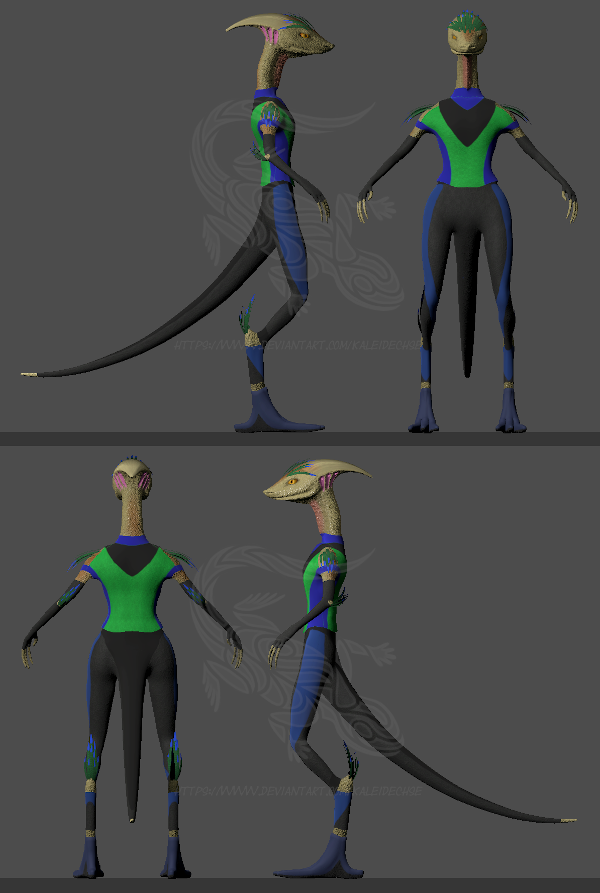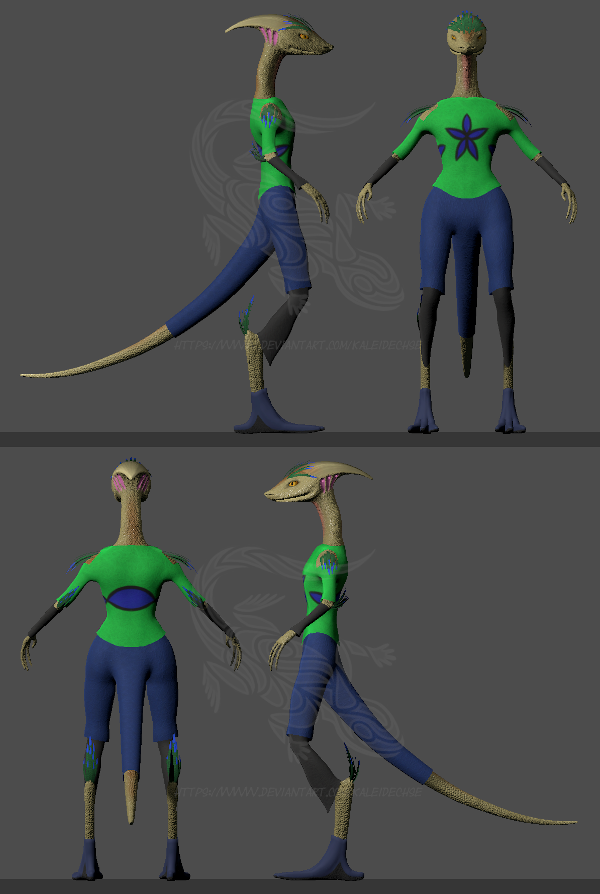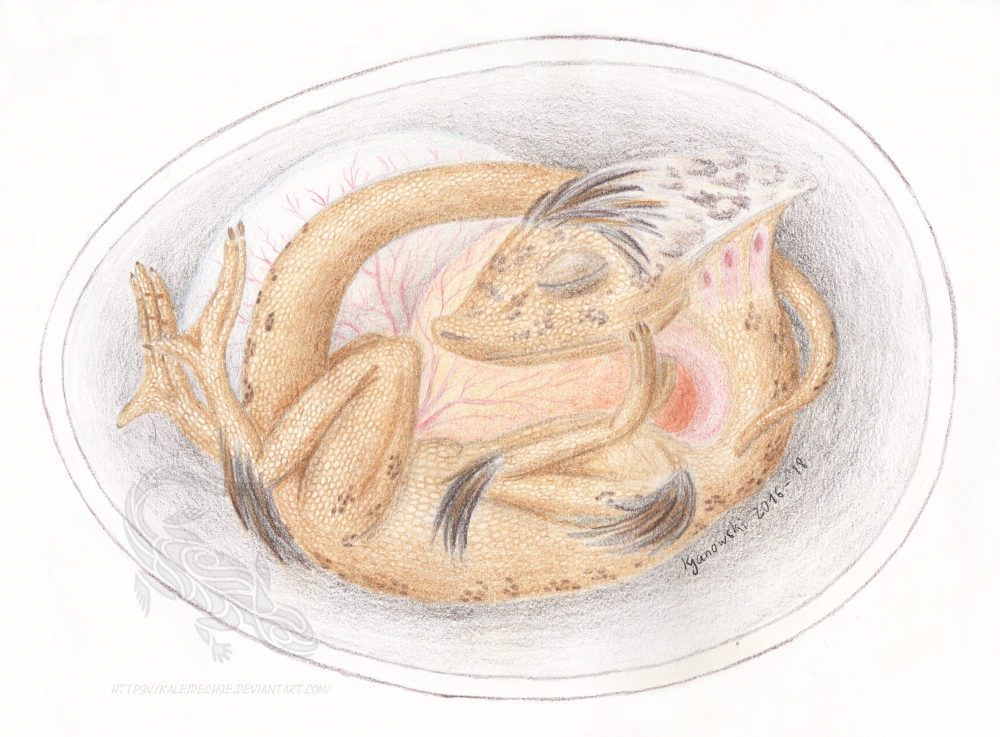Rul
A bipedal species of sapient reptilians who inhabit Ranul.
Basic Information
Anatomy
Rul are bipedal reptilians, with one head on an elongated neck, two arms, two legs and a tail.
They have two eyes, three ear canals on either side, and a bony crest protruding from the upper back of their heads.
Their hands and feet have four digits each, including the opposable thumbs and hind toes. Rul are digitigrades.
There is a feather crest on their forehead, as well as feathers on their shoulders, elbows and ankles.
Biological Traits
During the Era of the First Civilization, certain traits developed differently in the Rilanga and Ran-E-Zu. However, after the Final War, the newly-founded Rilsu society took great care to interbreed between the remnants of both factions, both for rebuilding a sufficiently diverse gene pool and for ensuring that no-one could claim a "pure" lineage. As a result, the majority of traits are evenly distributed in the Rul genes.
Their coloration changes over the course of their life. During infancy, their feathers are colored in irregular patterns of beige, brown and gray while their head and back are covered in brown spots. This coloration is left over from earlier evolutionary stages and originally helped the infants blend in with their surroundings. As they approach sexual maturity, the feathers begin to take on their primary color while the spots vanish. By the time a Rul is sexually mature, the tips of their feathers display a secondary, often contrasting color.
These colored tips begin to vanish again around the age of 20 years, and around the age of 30 years the primary color starts to fade into gray.
There is little sexual dimorphism in this species. The major outward difference between the sexes is a dewlap on the male's throat.
Genetics and Reproduction
Rul are oviparous. They usually form one single egg per conception, and are "yolking" for about 10 days before laying it.
On average, these eggs are 17 cm long and 13 cm wide. It takes approximately three months for the infant to hatch.
Growth Rate & Stages
Rul are sexually mature at about 7 years and fully grown at about 9 years. Naturally, their bones and general health start to deteriorate around the age of 40 years, but this process is usually slowed down with dietary supplements, genetic maintenance therapies or cybernetics.
Dietary Needs and Habits
Rul are omnivores with a preference for insects.
Additional Information
Geographic Origin and Distribution
Rul are found all over Ranul, primarily near the three seas on the moon's inner face.
Civilization and Culture
Average Technological Level
The Rul have the most advanced technology in the entire star system. So far they were the only species to develop advanced computer systems, weapons of mass destruction and vessels capable of space flight.
The modern Rilsu have access to personal aircraft, matter converters and neural interfaces to various technologies. Other achievements include sophisticated artificial intelligences and virtual environments.
History
The species came close to extinction due to the Final War between the Rilanga Union and the Ran-E-Zu Confederation. By the end of the war, about 97% of Ranul's population had been wiped out by weapons of mass destruction.
Interspecies Relations and Assumptions
In modern times, Ranul's inhabitants have developed a sense of high respect for cattle and wildlife. While animal protein is still a major part of the Rul diet, the Rilsu take measures to ensure the respective animals' wellbeing before their death, and to cause them as little stress as possible when killing them. Very little of the animals' bodies is allowed to go to waste.
As for other sapients, the Rilsu have begun studying Tuvasuno's inhabitants from afar, avoiding direct interaction so that the latter can develop on their own.






Comments